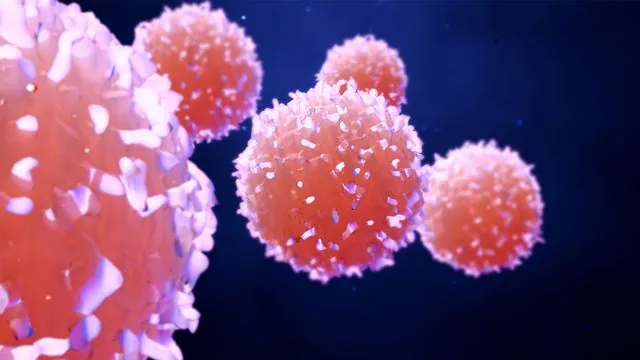
New Breakthrough in Understanding BRCA2 Gene’s Role in Cancer Protection
2025-03-27
Author: Wei
Introduction
In a groundbreaking study, researchers from Yale School of Medicine and NYU Grossman School of Medicine have unveiled how mutations in the BRCA2 gene, known for its role in DNA repair and tumor suppression, significantly predict a person's likelihood of developing various cancers, including breast, ovarian, prostate, and pancreatic tumors.
Publication Details
Published on March 26 in the esteemed journal *Nature*, the research sheds light on a previously unidentified protective mechanism that the BRCA2 gene employs and hints at potential enhancements to existing cancer therapies.
The Role of BRCA2 in DNA Repair
The BRCA2 gene is pivotal in maintaining genomic stability during cell division by repairing damaged DNA. However, mutations in this gene can lead to failures in the repair process, thus increasing the risk of tumor growth.
PARP1's Role and PARP Inhibitors
A critical protein, PARP1 (poly(ADP-ribose) polymerase 1), typically plays an essential role in identifying DNA damage and enlisting repair mechanisms. Since the introduction of PARP inhibitors in 2014, many BRCA2-deficient cancer patients have experienced temporary remissions, although the precise mechanisms of how these drugs induce cancer cell death have remained elusive.
Research Findings
The research team, headed by Ryan Jensen from Yale and Eli Rothenberg from NYU, utilized advanced biochemical techniques and single-molecule analysis to investigate the interactions between BRCA2, RAD51 (a protein crucial for DNA repair), and PARP1.
Astonishingly, they discovered that PARP inhibitors can inadvertently cause PARP1 proteins to trap on the DNA strands, which destabilizes the DNA repair complexes, complicating the repair tasks managed by RAD51.
The Protective Role of BRCA2
What’s extraordinary is that, according to Jensen, the BRCA2 gene serves as a protective shield over these complexes, preserving the function and integrity of the DNA repair pathways. 'While cancer cells might endure the loss of BRCA2, inhibiting PARP1 seems to lead them to their demise,' Jensen remarked.
Future Directions
Despite these exciting findings, the researchers remain puzzled by a key aspect: why do the advantageous effects of PARP inhibitor treatments eventually diminish? However, the methodologies developed in this study are anticipated to enhance the understanding of the intricate molecular interactions present in patients with BRCA2 mutations, paving the way for newer strategies to extend the effectiveness of PARP inhibitor therapies.
Conclusion
With this discovery, the potential for more targeted cancer treatments is within reach, signaling a new dawn in the battle against genetically inherited cancers. Researchers and medical professionals alike are hopeful that further exploration will unlock deeper insights and improve patient outcomes in the fight against cancer.
Call to Action
Stay updated on the latest advancements in cancer research—discovering the line between hope and innovation!



 Brasil (PT)
Brasil (PT)
 Canada (EN)
Canada (EN)
 Chile (ES)
Chile (ES)
 Česko (CS)
Česko (CS)
 대한민국 (KO)
대한민국 (KO)
 España (ES)
España (ES)
 France (FR)
France (FR)
 Hong Kong (EN)
Hong Kong (EN)
 Italia (IT)
Italia (IT)
 日本 (JA)
日本 (JA)
 Magyarország (HU)
Magyarország (HU)
 Norge (NO)
Norge (NO)
 Polska (PL)
Polska (PL)
 Schweiz (DE)
Schweiz (DE)
 Singapore (EN)
Singapore (EN)
 Sverige (SV)
Sverige (SV)
 Suomi (FI)
Suomi (FI)
 Türkiye (TR)
Türkiye (TR)
 الإمارات العربية المتحدة (AR)
الإمارات العربية المتحدة (AR)